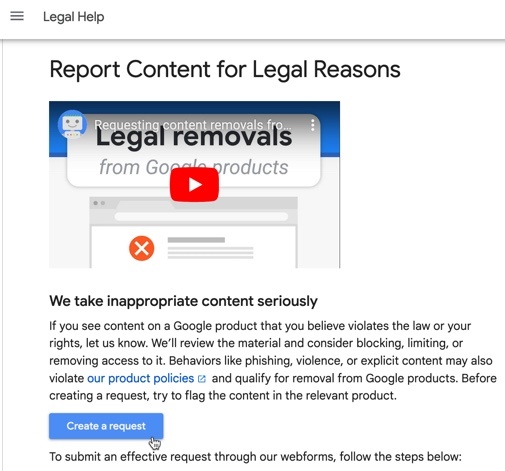Syndicated content walks a tightrope in the world of SEO, offering both pitfalls and windfalls.
On the one hand, it can significantly expand your visibility on search...
But if not approached properly, it can also harm your search engine rankings.
Syndicated content can also be controversial, with concerns about the possibilities of duplicate content penalties and more.
But what's the truth?
In this post, you'll discover:
- How syndicated content really works in terms of its impact on SEO
- Actionable strategies to use syndicated content effectively in ways that help rather than harm your search engine visibility.
First, let’s identify what's really meant when people talk about content syndication…
What is Content Syndication?
Content syndication is the process of allowing other platforms to republish your content.
This practice extends beyond the online world, and actually precedes it, encompassing various types of media, including TV, radio, and print.
Think of TV reruns or radio shows broadcasted across multiple channels—these are all forms of syndication. Online, this means your articles, blog posts, or videos appear on different websites, reaching new audiences.
Similarly, you can share other people’s content on your site when relevant to your target audience.
Content syndication involves republishing your material on other platforms, extending your reach without creating new content for each siteClick To Post OnWhy Bother?
The primary goal of syndicating your content is to help spread the word about your business. In doing so, you attract more visitors to your website, grow your email list, increase your customer base, and boost your overall profitability.
Content syndication allows you to introduce your brand to broader audiences without creating new material for each platform, often with zero ad spend.
When featuring the content of others, similar benefits apply. You attract more visitors both through search while simultaneously boosting your site’s SEO.
But what about guest posting? What’s the difference?
Syndication vs. Guest Posting
Spot the Difference
At first glance, content syndication and guest posting might seem similar, but there are key differences that impact your SEO strategy.
Content Originality
- Guest posting—guest posts are original pieces created specifically for the host site. Each post is unique and tailored to the audience of the site where it’s published.
- Content syndication—syndicated content, on the other hand, is the same material republished across multiple sites. This allows you to distribute the same content widely without creating brand new material each time (although you may need to repurpose it to suit a particular channel—for more info, watch the quick overview video below, or see the full guide here).
Ownership
- Guest posting—when you guest post, the hosting website often takes ownership of the content, which means you might have limited control over how it’s used.
- Content syndication—with syndication, you retain ownership of the content. This means you can republish it on multiple sites while keeping the rights to your work.
Scalability
- Guest posting—guest posting is less scalable because each post needs to be unique. Creating numerous original articles for different sites can be time-consuming and resource-intensive.
- Content syndication—syndication is highly scalable. You can distribute the same content to multiple sites, maximizing reach and exposure with less effort compared to creating unique guest posts.
Why It Matters
Both syndicated content and guest posts aim to increase traffic and generate backlinks to your site.
However, the strategies and outcomes differ significantly:
- Guest posts—ideal for building relationships and establishing authority in specific niches. They help drive targeted traffic and generate high-quality backlinks, but they require a considerable investment of time and resources.
- Content syndication—more efficient for broad distribution. It allows you to reach wider audiences quickly and keep control over your content. However, it requires careful management to avoid SEO pitfalls, such as duplicate content issues and backlink penalties (we’ll look at these some more shortly).
Understanding these differences helps you choose the right strategy for your content marketing goals.
Whether you opt for guest posting, content syndication, or (even better!) a mix of both, aligning your approach with your objectives will ensure the best results for your SEO and digital marketing efforts.
How Does Content Syndication Affect SEO and Traffic?
Boost or Bust?
When you publish your content on other websites or host external content on your own site, it can significantly impact your SEO, website traffic, and brand reputation.
Here’s a closer look at the potential benefits and challenges.
Positive Impact
- Increased visibility—syndicating your content can dramatically increase its reach. By appearing on multiple platforms, your content can attract a wider audience and drive more traffic back to your original site.
- Enhanced authority—when reputable sites republish your content, it can enhance your brand’s authority and credibility. This can positively influence your SEO by signaling to search engines that your content is valuable and trusted.
- Quality backlinks—if done correctly, content syndication can generate high-quality backlinks. These backlinks can improve your site’s domain authority and boost your search engine rankings.
Negative Impact
Despite the potential benefits, content syndication does come with risks that can affect your SEO and traffic.
Two major concerns are backlink penalties and duplicate content.
Backlink Penalties
Google warns against scalable link schemes.
With syndication, it’s wise to use nofollow tags on syndicated backlinks, particularly in paid collaborations, to safeguard against penalties.

However, if your content is republished with your permission because it’s valued, a dofollow link is acceptable and can benefit your SEO. This is just a standard link, and doesn’t require specific attribution.

Duplicate Content
Though syndicated content does repeat across different sites, it’s a myth that Google issues penalties simply for duplicate content.
Google doesn't penalize for duplication in the traditional sense but will act against sites that spam or scrape content without adding value.
Google favors unique contributions and asks for clear indications of duplicate content across domains to better understand which version to rank.
This isn't about penalizing duplication but ensuring diversity in search results.
Syndicating Other Peoples' Content
Pros and Cons
Featuring other people’s content on your site can help you in many ways… but it can also hinder!
Here are the pros and cons:
Pros
- Content variety—adding diverse content can enrich your site and engage your audience.
- Increased traffic—featuring high-quality, relevant content can attract visitors through search and social media.
- SEO benefits—if managed correctly, syndicating valuable content can boost your SEO by increasing the variety of topics and keywords on your site.
Cons
- Ranking challenges—syndicated content often doesn’t rank well on Google because the original source usually gets the SEO credit.
- Quality control—there’s a risk of associating your brand with lower-quality sites if contributors are not carefully vetted.
- Audience overlap—if the content is already widely distributed, you might not reach new viewers.
Best Practices
To maximize benefits and minimize risks, follow these best practices:
- Respect original owners—always adhere to the original content owners' requirements for canonical tags or backlinks.
- Use canonical tags—ensure that search engines recognize the original source to avoid duplicate content issues.

- Add value—provide context or additional insights when republishing content to make it valuable to your audience and relate it back to your brand.
Syndicating Your Own Content
Benefits and Strategies
Syndicating your own content can drive traffic back to your site and build your authority:
- Traffic and authority—having your content on reputable sites can attract new visitors and enhance your brand’s credibility.
- SEO Boost—properly managed syndication can improve your SEO through high-quality backlinks and increased visibility.
Best Practices
- Index first—ensure your content is indexed on your site before it’s syndicated to establish your site as the primary source.
- Use canonical tags—request that the republishing sites use canonical tags pointing back to your original content to maintain SEO integrity. See Google’s guide.
- Choose partners wisely—syndicate your content to reputable sites that align with your brand and audience.
- Monitor performance—regularly track how your syndicated content performs on partner sites and adjust your strategy as needed.
- Build relationships—aim for long-term partnerships with sites that benefit both parties, enhancing reach and credibility.
By following these strategies, you can leverage content syndication to expand your reach and strengthen your digital presence without compromising your SEO efforts.
Dealing with Content Theft
In contrast to content syndication—where content is published with permission—you might also find your content republished elsewhere without your consent.
This can be problematic because:
- Brand damage—unauthorized republication is likely to occur on less reputable sites, which can damage your brand and reputation.
- Lack of attribution—such content often lacks links or references back to your website, providing no benefit or recognition for your business.
- SEO impact—unauthorized duplication can compromise the uniqueness of your content, potentially harming your SEO efforts.
So how can you deal with it? Let’s find out, including some best practices to stop it happening in the first place.
Protect Your Work
Content theft is a frustrating reality for many content creators.
If you find that your content has been stolen and republished without permission, here’s a step-by-step plan to protect your intellectual property and maintain your site’s integrity.
Note: This is not legal advice. If in doubt, consult your attorney.
Quick Action Plan
- Document the theft—save screenshots or URLs where your content appears without your permission. This documentation is crucial for proving that your content was stolen.
- Contact the offender—reach out to the website owner or administrator where your content is published. Politely ask them to either credit you with a backlink to the original content (presuming you’re otherwise happy for the content to remain where it is) or remove the content from their site.
- Report to hosting provider—if the offender does not respond or refuses to comply, use tools like Who Hosts This to find their hosting provider. Report the infringement to the hosting provider, providing the documentation you collected.

- File a DMCA complaint—as a last resort, file a Digital Millennium Copyright Act (DMCA) complaint with Google to have the infringing content removed from search results. This can help mitigate any potential negative impact on your SEO.

Best Practices for Prevention
- Monitor your content—use tools like Google Alerts, Copyscape, or Grammarly’s Plagiarism Checker to regularly check if your content is being republished without permission.
- Clearly state usage terms—on your website, clearly state the terms of use for your content, specifying whether it can be republished and under what conditions.
- Use watermarks—for visual content, consider adding watermarks with your brand or website name. This can deter unauthorized use and ensure credit is given where it’s due.
Stay Proactive
Taking these proactive steps can help ensure that your content remains protected and that your site maintains its integrity and ranking in search results.
Monitoring your content while addressing content theft promptly and effectively will safeguard your intellectual property and uphold your brand’s reputation.
By being vigilant and prepared, you can protect your valuable content assets and continue to leverage them for your digital marketing success.
Pros and Cons of Syndicated Content for SEO
Expanded Visibility and Reach
Pros
- Increased visibility—syndicated content can introduce your brand to a broader audience. By appearing on multiple platforms, your content can reach potential customers who might not have found you otherwise.
- Enhanced credibility—when reputable sites republish your content, it enhances your brand’s authority and credibility. This positive association can signal to search engines that your content is valuable and trusted, boosting your SEO.
- SEO benefits—properly managed syndicated content can improve your SEO through quality backlinks. Using canonical tags correctly can help search engines recognize your original content as the primary source, benefiting your site’s search ranking.
Cons
- Duplicate content issues—if not managed correctly, syndicated content can lead to duplicate content problems. Search engines might struggle to determine which version of the content to rank, potentially diluting your SEO efforts.
- Quality control risks—syndicating your content to lower-quality or irrelevant sites can harm your brand’s perception. It’s crucial to choose syndication partners carefully to maintain your content’s integrity and value.
- Audience overlap—syndicating content to sites with a similar audience might limit the reach of new viewers. If the same audience sees your content on multiple sites, it can reduce the effectiveness of your syndication efforts.
5 Best Practices for Managing Syndicated Content
To maximize the benefits and mitigate the risks of syndicated content, follow these 5 best practices:
- Use canonical tags—ensure that syndicated content includes a canonical tag pointing back to the original article on your site. This helps search engines recognize the primary source and avoid duplicate content issues.
- Select partners carefully—choose reputable sites that align with your brand and target audience. Syndicating your content on high-quality, relevant platforms can enhance your SEO and brand perception.
- Monitor performance—regularly track how your syndicated content performs on partner sites. Use analytics to understand which platforms drive the most traffic and engagement, and adjust your strategy accordingly.
- Add value—when repurposing content for syndication, tailor it to the new audience. Adding unique insights or adapting the content’s format can make it more engaging and valuable to readers.
- Build relationships—aim for long-term partnerships with syndication platforms that offer mutual benefits. Consistent collaboration with reputable sites can enhance your reach and authority over time.
Frequently Asked Questions
What is content syndication?
Content syndication involves republishing your material on other platforms to extend your reach without creating new content for each site.
How does content syndication affect SEO and traffic?
Syndicated content can boost your SEO by increasing backlinks and driving more traffic to your website.
What are the differences between syndication and guest posting?
Guest posting involves unique content for each site, while syndication republishes the same material widely, offering scalability advantages.
Why bother with content syndication?
Content syndication helps spread awareness about your brand, attract more visitors, grow your email list, and boost profitability with minimal ad spend.
What are the best practices for managing syndicated content?
Choose reputable sites aligning with your niche, use canonical tags, monitor performance, add value to content, and build long-term partnerships for successful syndication.
To Conclude
Syndicated content can significantly enhance your digital marketing strategy by extending your reach while maintaining your site’s SEO integrity.
By following SEO best practices and carefully managing your syndication efforts, you can turn syndicated content into a powerful tool to boost your site’s visibility and authority, and help grow your business
Adopt a strategic approach to content syndication and SEO. By collaborating with reputable platforms and adhering to best practices, you’ll expand your digital presence and maximize the impact of your shared content.



